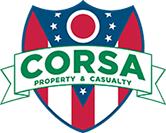In the world of building management, Heating, Ventilation, and Air Conditioning (HVAC) systems are crucial for maintaining a comfortable and energy-efficient environment. HVAC controls, the systems that manage these functions, can be either open (non-proprietary) or proprietary. Proprietary HVAC controls are systems designed by a single manufacturer, often using unique, non-standardized technology that cannot be easily integrated with other systems. While these systems can offer seamless performance within their ecosystem, they can also pose significant challenges for building owners.
The Drawbacks of Proprietary HVAC Controls
One of the primary issues with proprietary HVAC controls is the dependency they create on a single manufacturer or contractor. Here are some of the common problems building owners might encounter:
- Limited Vendor Options: When you use proprietary controls, you are often tied to the original vendor or manufacturer for any upgrades, maintenance, or repairs. This lack of competition can lead to higher costs and limited service options.
- Higher Maintenance Costs: Since only authorized contractors can work on these systems, maintenance and repair costs can be significantly higher. There is little incentive for competitive pricing when the service provider knows they are your only option.
- Delayed Service: With limited authorized service providers, you may face delays in obtaining necessary repairs or upgrades, potentially leading to extended periods of discomfort or inefficiency within your building.
- Obsolescence and Upgrades: Proprietary systems may become obsolete faster than open systems. If the manufacturer decides to discontinue support or upgrades, you might be forced into costly system overhauls.
- Integration Issues: Integrating proprietary systems with other building management systems can be challenging and costly, limiting your ability to adopt new technologies or improve overall building efficiency.
Avoiding the Proprietary Trap
To avoid the pitfalls associated with proprietary HVAC controls, consider the following strategies:
- Specify Open Standards: When selecting HVAC systems, look for those that adhere to open standards such as BACnet. These standards ensure interoperability between different manufacturers’ equipment, giving you more flexibility in choosing service providers.
- Consult Independent Experts: Work with independent HVAC consultants who can help you navigate the market and choose systems that best meet your needs without locking you into a single vendor.
- Thoroughly Review Contracts: Carefully examine service agreements and warranties to understand the long-term implications of your purchase. Ensure that you have the option to work with multiple service providers.
- Ask for References: Before committing to a particular system, ask for references from other building owners who have used the same controls. This can give you insight into potential issues and the level of satisfaction with the system and service.
Escaping Proprietary Systems
If you find yourself already locked into a proprietary HVAC control system, there are steps you can take to mitigate the situation:
- Negotiate with Your Vendor: Engage in discussions with your current vendor to negotiate more favorable terms, such as reduced service fees or extended support periods. Highlighting the potential for future business can sometimes lead to better deals.
- Gradual Transition: Plan a phased transition to an open system. Start by integrating open-standard components in areas where upgrades are necessary, gradually replacing proprietary elements over time.
- Hire a Third-Party Integrator: Independent integrators specialize in making disparate systems work together. They can help bridge the gap between your current proprietary system and more open, flexible solutions.
- Invest in Training: Ensure your in-house maintenance team is trained to understand and manage your HVAC system. This can reduce dependency on external contractors and improve response times for repairs and maintenance.
Conclusion
While proprietary HVAC controls can initially seem like a reliable and straightforward solution, they often come with significant long-term drawbacks. By prioritizing open standards and flexibility when choosing HVAC systems, building owners can avoid being locked into a single vendor and maintain greater control over their building management. For those already facing the challenges of proprietary systems, strategic planning and leveraging independent expertise can help transition to more open and cost-effective solutions.
Author

Joe Sokol
Regional Manager
County FIRM
(330) 592-3946
jsokol@palmerc2.com





